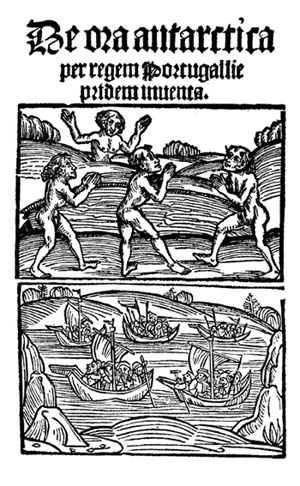Where could Waldseemüller have obtained maps of the Americas?
|
|
|
|
|
|
|
|
|
|
Vespucci (d. 1512) and Waldseemüller (d. 1518) may have corresponded. Amerigo Vespucci may himself have been the source for the maps.
Since he had hoped to find "some scholar" to help prepare an account of his travels, might this not be Waldseemüller, whose edition of the Vespucci voyages is the most complete?
And, since Vespucci indicated that he intended to prepare both a globe and a flat map to accompany his accounts, isn’t it strange that Waldseemüller, on his own initiative, should do exactly this?
These are speculations, but not without some documentary evidence.
Waldseemüller was recognized as a cosmographer and would have been a logical choice for printing the Vespucci accounts.
The German printers of the Strassburg region were leaders in printing woodcut maps and illustrations. In 1505 a Latin edition of the account of Vespucci’s third voyage was printed in Strassburg, with a woodcut illustration,

and with a dedication and poetry written by Matthias Ringmann!

It may be that Vespucci himself sent the text for the new edition of his "Four Voyages" and accompanying maps or sketches to the prestigious Gymnasium Vosagense in St. Dié. If so, why would this not be stated in the text of the Cosmographiæ Instructio? One good reason: in returning to Spanish service in 1505, and by receiving citizenship Vespucci’s situation had changed. Three years later he became the "Pilot Major", whose major responsibility was to maintain secrecy about Spanish maps of the Americas.
Future research may reveal a link between Vespucci and Waldseemüller in the publication of the maps and a book that named America.
©1999-2001 by the Regents of the University of Minnesota, Twin Cities. University Libraries. All rights reserved. Please credit the James Ford Bell Library,
University of Minnesota if you copy or reproduce material from
this page.
URL: http://www.bell.lib.umn.edu/index.html